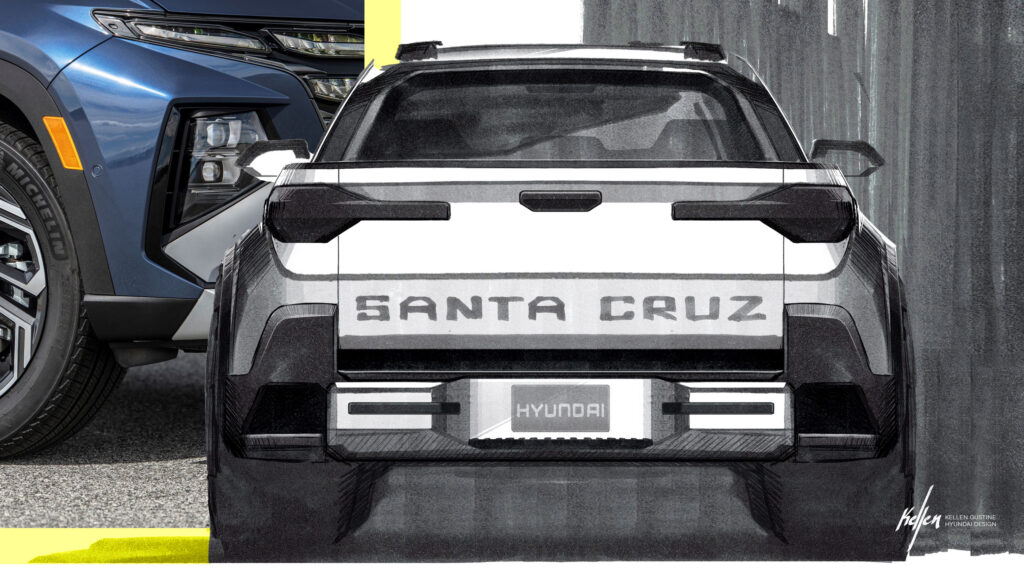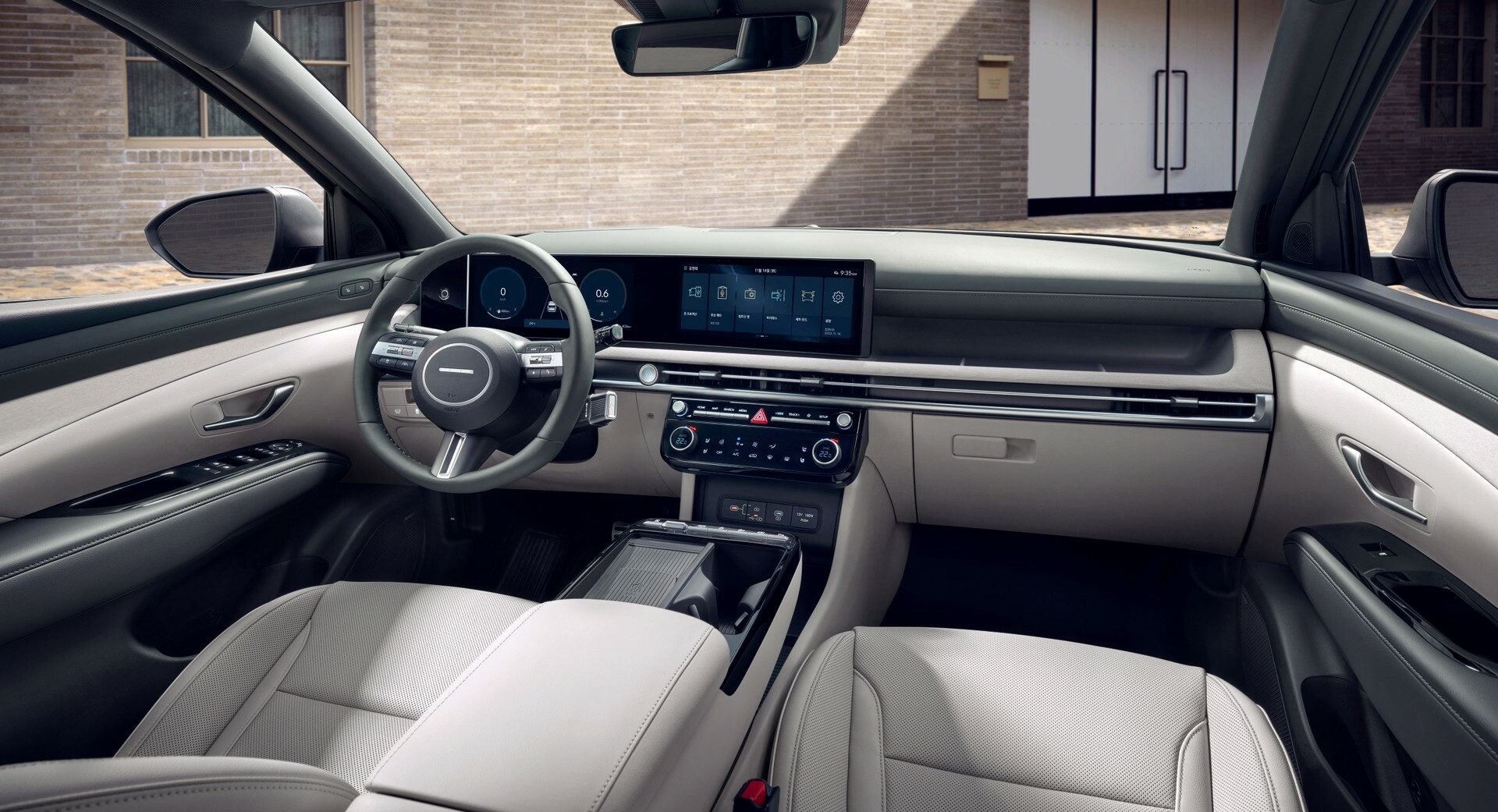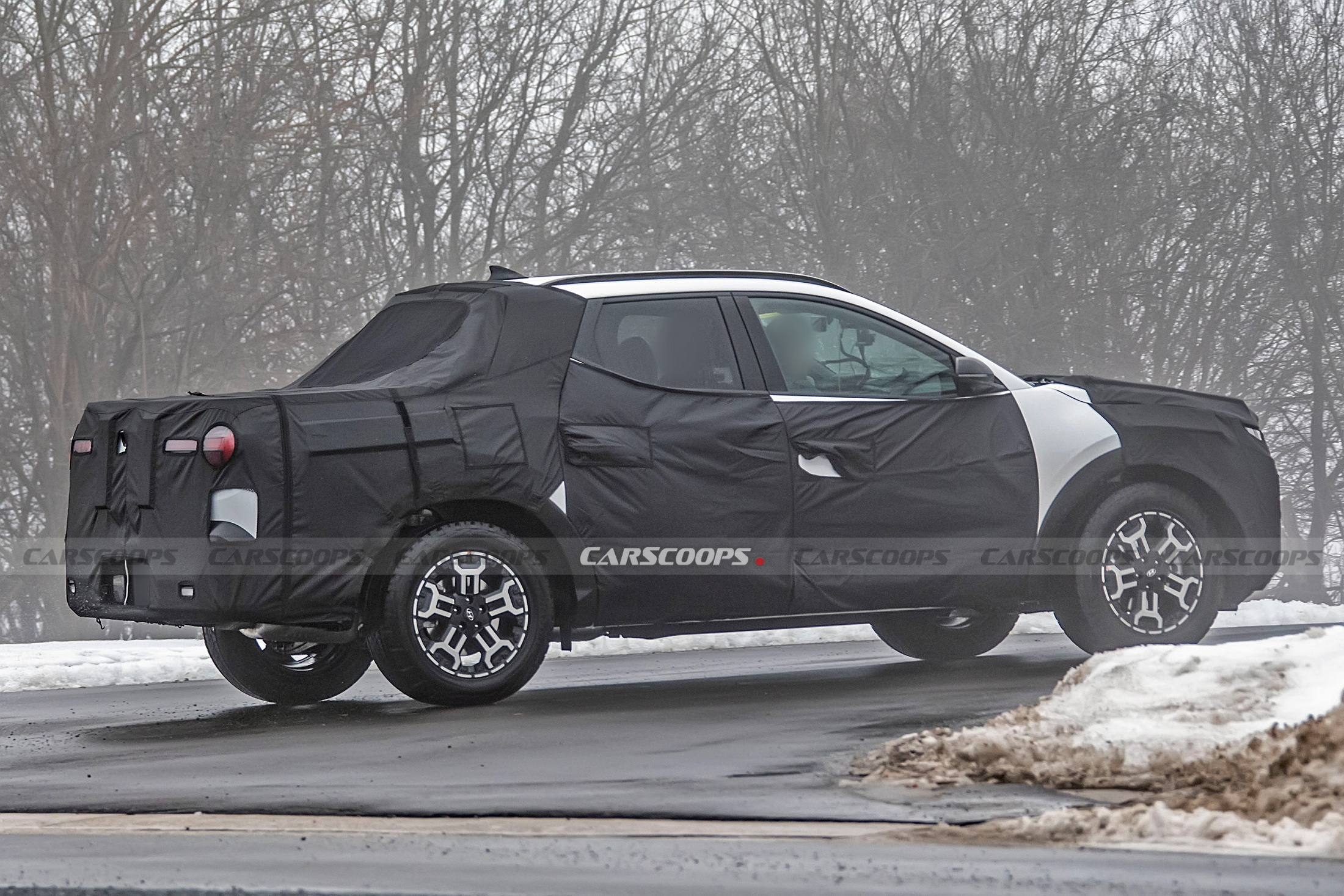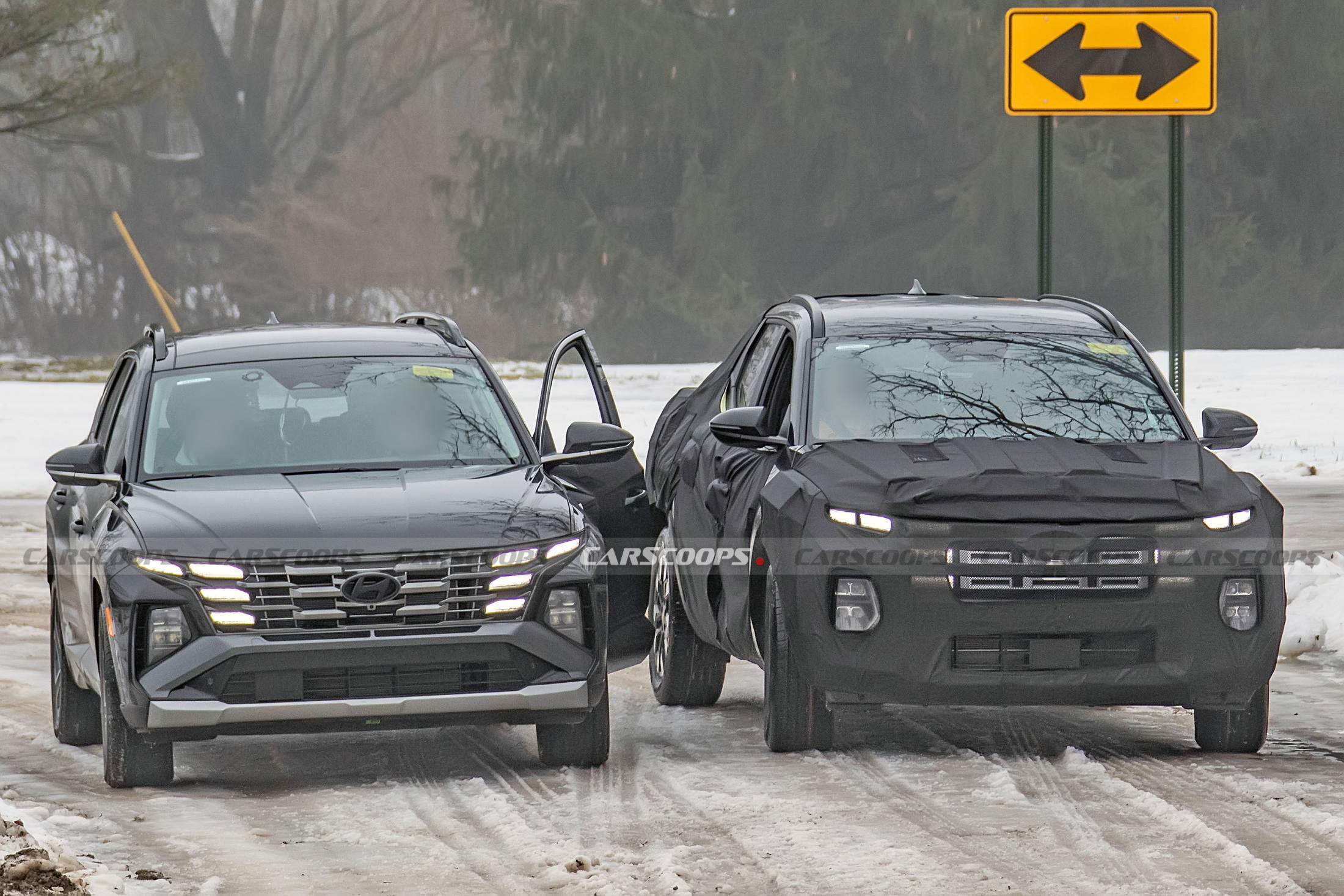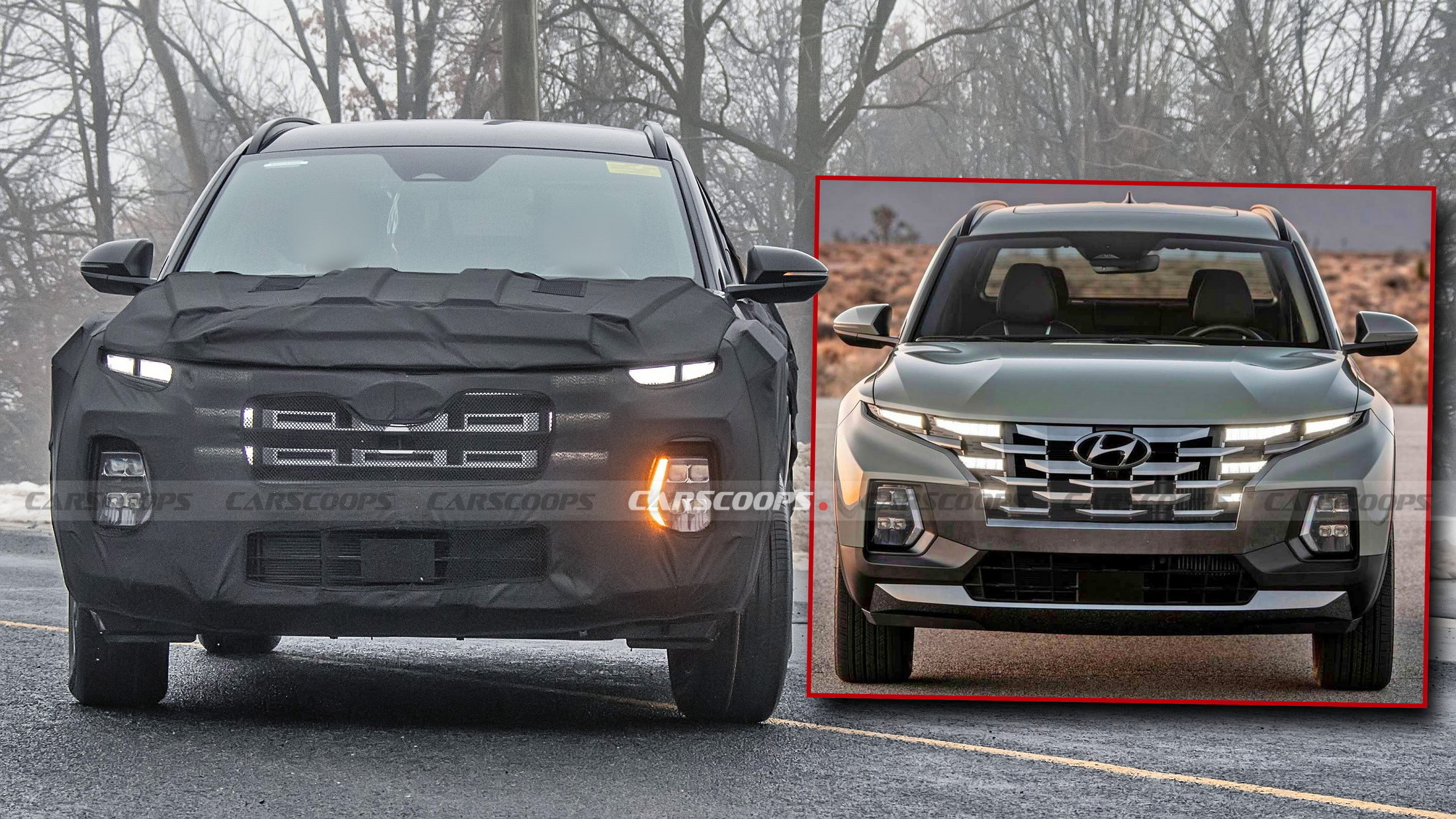The New York Auto Show kicks off next week and Hyundai will use the event to unveil the facelifted Tucson and Santa Cruz. Both models will be introduced on March 27, but we’ve already seen the 2025 Tucson as it was introduced in South Korea last November.
While Hyundai is playing coy on U.S. specifications, the Korean variant has an evolutionary design that adopts a new grille and updated lighting units. They’re joined by a new front bumper, a faux skid plate, updated wheels, and a lightly revised rear end.
More: 2025 Hyundai Santa Cruz Facelift Aims To Further Distinguish Itself From The Tucson
Korea-spec Hyundai Tucson
Some of the biggest changes occur inside as the Tucson adopts a modern interior with a new dashboard and a panoramic curved display. The latter consists of a 12.3-inch digital instrument cluster and a matching 12.3-inch infotainment system. The Korean model also has a new three-spoke steering wheel, updated switchgear, and a revised center console.
On the performance front, the Korean-spec crossover offers a turbocharged 1.6-liter four-cylinder with 178 hp (132 kW / 180 PS) and a 2.0-liter diesel with 181 hp (135 kW / 184 PS). The company also offers a hybrid variant, which combines an electric motor with the 1.6-liter engine.
Santa Cruz To Get Rugged Styling, Updated Interior
Less is known about the Santa Cruz, but Hyundai said it will have a rugged design as well as an updated interior with improved ergonomics, a new infotainment system, and additional driver assistance systems.
That’s not much to go on, but the model was recently spied undergoing testing. As a result, we know the truck will have a lightly revised exterior with a new grille and updated lighting units. We can also expect updated bumpers and revised taillights.
While Hyundai confirmed a handful of interior updates, they should echo those made to the Tucson. This means we can expect a more conventional cabin with a modern design.
Powertrain details remain elusive, but the current model offers 2.5-liter four-cylinder engines. The naturally aspirated variant develops 191 hp (142 kW / 194 PS) and 181 lb-ft (245 Nm) of torque, while the turbocharged engine has 281 hp (210 kW / 285 PS) and 311 lb-ft (421 Nm) of torque.




